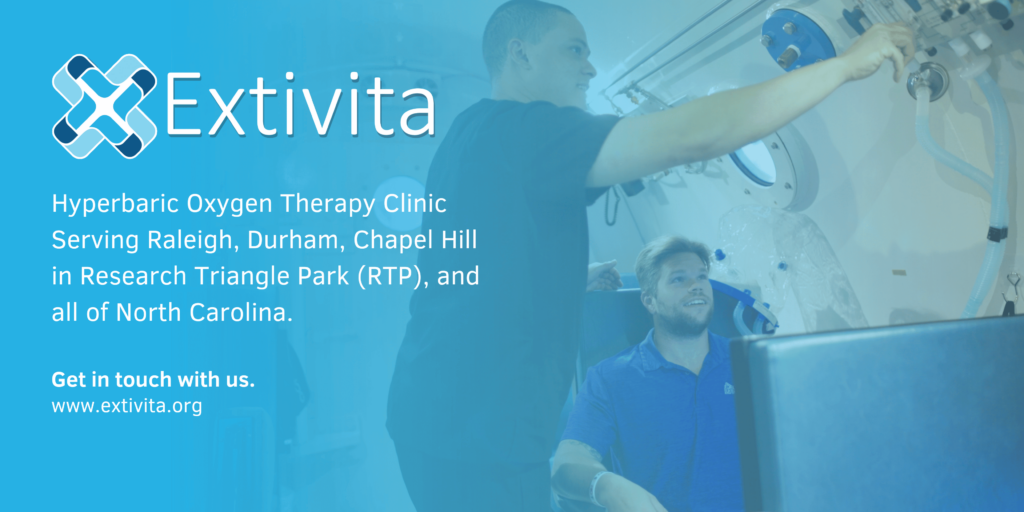A Medical Revolution: Unveiling the Broad Benefits of a Breakthrough Drug
By Edward R. di Girolamo, PE
In this article, you can expect a comprehensive exploration of the groundbreaking field of this “Breakthrough Drug” and its potential applications in addressing a wide range of medical conditions. We will delve into 28 physiological mechanisms (a partial list) which this drug targets. This will shed light on how this drug can impact various aspects of health, ranging from inflammation to issues with the blood-brain barrier and gut lining dysfunction. Moreover, we will guide you on how to leverage this knowledge for your own research by providing step-by-step instructions on using this article and AI-based tools to gain a deeper understanding of your specific medical condition or indication (Attachment B). By the end of this article, you will have a well-defined roadmap for evaluating how this drug may offer hope and healing for individuals facing various health challenges. You will also have the necessary guidance to engage effectively with healthcare professionals, enabling them to offer personalized treatment recommendations and empowering you to advocate for yourself or others.
So, let’s dive in…. We all recognize that oxygen is the essential element for life on Earth, constituting 21% of the air we breathe. Barometric pressure, measuring the weight of the air above us, delivers the necessary force to supply the required oxygen for our survival. When increased, this combination of oxygen and pressure has been recognized as a breakthrough drug for centuries and known more widely as hyperbaric oxygen.
Hyperbaric Oxygen Therapy (HBOT), as we refer to it today, isn’t just another treatment method; it represents a medical revolution. With its multifaceted approach to healthcare, HBOT is redefining how we combat inflammation, a primary driver of most all health conditions affecting both the brain and gut, and our entire physiology as you will soon discover.
Research in the field of hyperbarics has experienced exponential growth, as illustrated below in a recent search on NIH’s PubMed, which reveals over 5000 studies and a continually expanding body of literature.

The Inflammation Cascade: A Root Cause
Inflammation is often considered the body’s natural defense mechanism against injury or infection. However, when inflammation becomes chronic, it can trigger a cascade of harmful physiological mechanisms that contribute to a wide range of health conditions. This article aims to delve into the complexities of the inflammatory cascade, exploring its role as a root cause of chronic diseases like Alzheimer’s, Multiple Sclerosis, Autism Spectrum Disorders, and inflammatory bowel diseases such as Ulcerative Colitis and Crohn’s Disease.
Inflammation serves as a double-edged sword, being essential as a protective response, yet when left unresolved, can contribute to various diseases and detrimental conditions. The real question is when does the harm begin?
The Good (with a Caveat)
The relationship between inflammation and hypoxia (a lack of oxygen) can be intricate. Acute inflammation is generally a short-term response that helps the body heal. It involves the release of immune cells, antibodies, and proteins, along with increased blood flow to the affected area. While acute inflammation is generally a protective response, it can lead to localized hypoxia through several mechanisms, one of which is increased metabolic demand in inflamed tissues. Inflamed tissues require more energy for repair and defense processes, with oxygen demand potentially outpacing supply. This low-oxygen state is usually temporary and resolves as the inflammation subsides and normal tissue function is restored. What is important to understand is that damage resulting from reperfusion injury (which occurs when blood flow returns to a tissue after a period of hypoxia) is frequently more severe than the initial insult. Inflammation can exacerbate the situation by restricting oxygen supply to the affected area, amplifying its destructive impact.
The Bad
Chronic inflammation is a long-term, sustained inflammatory response that can last for months or even years. In contrast to acute inflammation, which resolves once the injury or infection is cleared, chronic inflammation endures, frequently resulting in prolonged and significant tissue damage.
The Ugly
The inflammation cascade is a series of events that can lead to cell death, tissue damage, and the activation of other harmful pathways. This cascade can contribute to the development and progression of many diseases.
Some Mechanisms Behind the Cascade
To understand the far-reaching impact of chronic inflammation, it’s crucial to delve into the mechanisms that fuel this destructive cascade. First, chronic inflammation leads to the overproduction of cytokines, signaling molecules that modulate the immune response. When produced in excess, cytokines can cause tissue damage and activate other harmful pathways. Second, chronic inflammation often results in oxidative stress, creating an imbalance between free radicals and antioxidants in the body, which can damage cells, proteins, and DNA. Third, inflammation can compromise the integrity of barriers like the blood-brain barrier and the gut lining, allowing harmful substances to infiltrate these sensitive areas. Fourth, chronic inflammation can trigger the immune system to attack healthy cells, leading to autoimmune diseases. Lastly, inflammation can disrupt hormone production and signaling, affecting everything from mood to metabolism.


Connection Between TBI, Inflammation, and PTSD
Why Timely HBOT is a Game-Changer
The Oxygen-Hungry Brain
Before diving into the complexities of Traumatic Brain Injury (TBI), it’s important to understand that our brains are, quite literally, oxygen hogs. Despite making up only 2% of our body weight, the brain consumes approximately 20% of the oxygen we breathe. This disproportionate need for oxygen highlights how crucial it is for brain health, especially when it’s damaged.
Consider the Case of TBI & its Relation to PTSD
Traumatic Brain Injury (TBI) is not just a fleeting medical concern; it’s a significant public health issue with far-reaching physiological and psychological implications. One of the most immediate and concerning consequences of TBI is inflammation within the brain. While inflammation is a natural and necessary response to injury, it becomes problematic when it persists and turns chronic. This chronic inflammation can set off a domino effect, leading to a range of negative outcomes, including the potential development of Post-Traumatic Stress Disorder (PTSD). It’s crucial to understand that PTSD is not merely a psychological condition; it has a biological foundation deeply rooted in chronic inflammation. This persistent inflammation can disrupt neurotransmitter levels, alter hormone balances, and even change the structure of the brain, resulting in the emotional and cognitive symptoms commonly associated with PTSD.
Consider the Case of Strokes
Strokes occur due to the interruption of blood supply to the brain, often caused by a clot or bleeding. The physiological mechanisms behind strokes include vascular dysfunction, ischemia, and oxidative stress.
In HBOT, elevated pressures lead to a significant increase in the amount of oxygen dissolved in the bloodstream. This enables oxygen to be delivered to areas of the brain with reduced blood flow, mitigating further neuronal cell death.
The Science of HBOT
The science behind HBOT is both fascinating and straightforward, hinging on the principles of physics and physiology. Essentially, HBOT leverages partial pressures to significantly increase the amount of dissolved oxygen in the bloodstream through the plasma. This increased oxygenation doesn’t just provide a temporary benefit; it profoundly impacts various physiological processes in the long term. The therapy’s well-documented anti-inflammatory properties have been the focus of thousands of studies, marking it as a revolutionary force in healthcare. It’s not merely about elevating oxygen levels; it’s about achieving this under pressure, enabling deeper penetration and enhanced efficacy, thereby amplifying the body’s innate healing mechanisms.
Understanding how HBOT works allows us to delve into its transformative potential for treating a wide range of physiological issues, particularly those affecting the brain and gut. Inflammation is a common denominator in many chronic conditions, and HBOT has shown remarkable promise in mitigating or even eradicating this underlying issue. In this article, we’ll provide a step-by-step guide to applying these physiological mechanisms to various medical conditions, unlocking the full therapeutic potential of HBOT. This is a critical aspect often overlooked in medical education in the U.S. but understanding it could be the key to revolutionizing how we approach treatment for a multitude of diseases.
Inflammation
Inflammation is the body’s natural response to injury or infection. However, chronic inflammation can be detrimental to both the brain and gut, contributing to conditions such as Alzheimer’s disease and inflammatory bowel disease. HBOT has demonstrated remarkable anti-inflammatory properties, reducing inflammation in these vital areas, mitigating the progression of diseases, and promoting healthier brain and gut function.
Hypoxia (Insufficient Oxygen)
Hypoxia occurs when tissues in the brain and gut don’t receive enough oxygen, leading to various health issues, including cognitive impairment and gut inflammation. HBOT, delivered in a pressurized chamber, significantly increases tissue oxygenation, aiding in the recovery and improvement of brain and gut tissues affected by hypoxia.
Oxidative Stress
Oxidative stress results from an imbalance between harmful free radicals and antioxidants in the body, potentially damaging brain and gut cells. HBOT acts as a powerful antioxidant, neutralizing free radicals and protecting brain and gut cells from oxidative damage, preserving overall organ health.
Blood-Brain Barrier and Gut Permeability
The integrity of barriers like the blood-brain barrier and the gut lining is crucial in controlling what substances enter these sensitive areas. When these barriers become permeable, harmful substances can cross, potentially causing neurological disorders and digestive issues. HBOT has been shown to restore the integrity of these barriers, preventing harmful substances from infiltrating the brain and gut, safeguarding their well-being.
Microbiota Imbalance
An imbalance in gut bacteria can disrupt the gut-brain axis, impacting mood, cognition, and digestive health. HBOT creates an oxygen-rich environment in the gut, promoting the growth of beneficial bacteria while discouraging harmful ones. This rebalancing of the microbiome can positively influence both brain and gut function, potentially alleviating various related conditions.
Neurotransmitter Imbalance
Neurotransmitters play a critical role in brain and gut function. An imbalance in these messengers can affect mood, cognition, and gastrointestinal motility. HBOT has been shown to improve neurotransmitter function, potentially restoring balance in the brain and gut, enhancing nerve cell communication, and improving mental health and gut function.
Hormonal Imbalance
Hormones regulate various bodily functions, including mood and digestion. An imbalance in hormones can lead to mood disorders and gastrointestinal problems. HBOT can help aid in hormone regulation, helping restore balance and positively impacting mood, cognition, and gut health, providing comprehensive support for overall well-being.
Nutrient Deficiency
Inadequate levels of essential nutrients can impair cellular function in the brain and gut, potentially leading to cognitive decline and digestive problems. HBOT enhances cellular nutrient uptake and utilization, enabling cells to absorb and process nutrients more efficiently, promoting optimal brain and gut function and potentially alleviating deficiencies.
Autoimmunity
Autoimmunity occurs when the immune system mistakenly attacks healthy cells, leading to a range of autoimmune disorders that affect the brain and gut. HBOT’s anti-inflammatory effects can help suppress immune responses, potentially reducing autoimmune reactions in these critical areas, supporting brain and gut health.
Toxicity
Exposure to harmful substances, whether environmental toxins or medications, can lead to brain and gut issues. HBOT facilitates detoxification processes in the body, aiding in the removal of harmful toxins from these vital organs. This detoxification support is integral in maintaining the health of the brain and gut.
Edema (Swelling)
Edema, the accumulation of fluid in tissues, can exert pressure on the brain and gut, causing discomfort and complications. HBOT reduces swelling by enhancing tissue oxygenation and aiding in the removal of excess fluid. Eliminating the surplus of fluid in the body helps alleviate pressure on these vital organs, promoting their normal function and aiding in the recovery process.
Ischemia (Poor Blood Flow)
Ischemia results from restricted blood flow, depriving the brain and gut of oxygen and nutrients. HBOT delivers oxygen to areas with compromised blood flow, thereby enhancing tissue recovery, improving circulation, and restoring proper function to these essential organs.
Metabolic Disorders
Metabolic disorders disrupt the body’s ability to process nutrients and energy, affecting brain function and gut health. HBOT enhances cellular metabolism and helps to regulate metabolic disorders in both the brain and gut by promoting efficient energy production and supporting overall well-being.
Genetic Factors
Genetic variations can predispose individuals to specific health conditions that affect the brain and gut. While not a direct cure, HBOT can mitigate some of the impact of genetic factors by enhancing cellular function, and potentially reducing the severity of genetically influenced diseases in these areas.
Psychological Stress
Mental and emotional stress can negatively impact brain and gut function. HBOT has a calming effect that may reduce stress and anxiety, promoting relaxation and stress relief, improving sleep patterns, and ultimately supporting mental and digestive health.
Infections
Infections, whether bacterial, viral, or fungal, can lead to various brain and gut diseases. HBOT enhances the immune system’s ability to combat infections in these areas, bolstering the immune response, aiding in the recovery and prevention of infectious diseases.
Trauma
Physical injuries or damage to the brain and gut can result in functional impairments. HBOT promotes tissue repair and regeneration, expediting recovery after traumatic events, restoring normal function to these crucial organs.
Drugs (On and Off-Label)
Medications, including both prescribed and off-label drugs, often come with side effects that can affect the brain and gut. Long-term drug use may exacerbate the very conditions they aim to treat. HBOT’s cellular repair mechanisms can counteract some of these side effects, contributing to improved brain and gut health.
Cytokine Imbalance
Altered levels of immune signaling molecules called cytokines can lead to inflammation and immune dysregulation. HBOT modulates the immune response by helping to rebalance cytokine levels. This anti-inflammatory action helps reduce inflammation-related damage in the brain and gut.
Endocrine Disruption
Chemical interference with hormone systems can disrupt brain and gut function. HBOT’s influence on the regulation of hormones may counteract endocrine disruption, promoting hormonal balance and supporting overall health.
Vascular Dysfunction
Abnormalities in blood vessels can compromise blood flow to the brain and gut. HBOT’s improvement in blood flow aids in alleviating vascular dysfunction, ensuring proper circulation and contributing to the well-being of these critical organs.
Electrolyte Imbalance
Irregularities in essential ion levels can disrupt bodily functions, including those in the brain and gut. HBOT’s cellular effects may indirectly assist in regulating electrolyte balance, contributing to overall physiological stability.
Mitochondrial Dysfunction
Impaired cellular energy production can affect both brain and gut function. HBOT enhances metabolism at the cellular level, improving mitochondrial function, aiding in restoring cellular energy production and function in these vital areas.
Epigenetic Changes
Epigenetic alterations can influence gene expression and susceptibility to diseases. While not fully understood, HBOT’s cellular repair mechanisms do positively influence epigenetic markers by mitigating epigenetically influenced conditions in the brain and gut.
Neural Plasticity
Neural plasticity, the brain’s adaptability to change, is crucial for learning and recovery from injury. HBOT promotes neural plasticity, aiding recovery after brain injuries and potentially impacting gut-brain communication. This enhancement in adaptability supports overall cognitive and digestive function.
Glycemic Control
Regulating blood sugar levels is essential for brain and gut health. Improved tissue sensitivity to insulin from HBOT may help in glycemic control, benefiting these organs and reducing the risk of metabolic complications.
Lipid Metabolism
Processing fats in the body is vital for cellular function. HBOT’s enhancement of cellular function may assist in regulating lipid metabolism, contributing to overall physiological balance in the brain and gut.
Fatty Acid Imbalance
Irregularities in essential fatty acids can lead to inflammation and other health issues. HBOT’s anti-inflammatory effects can counteract some inflammatory effects of fatty acid imbalances, supporting brain and gut health.
I trust you’re beginning to recognize the significance of effectively managing inflammation and are eager to delve deeper into understanding how HBOT becomes an all-encompassing therapeutic tool for addressing a wide array of health concerns. I aim to present the scientific aspects in a manner akin to how we typically approach prescription medications. While we might not routinely scrutinize the side effects or delve into the specifics of “informed consent” documents associated with drugs or vaccines, I’d like to provide you with an analogous perspective for HBOT:
Informed Consent Form for New Medication: A Breakthrough in Health and Wellness
This form reviews a groundbreaking chapter in healthcare. This informed consent form is designed to introduce you to this innovative therapeutic intervention, which offers both unparalleled safety and proven efficacy. Please peruse this document meticulously to grasp the full scope of what this treatment promises.
Risks and Side Effects
- Good Health: Designed to address the root causes of multiple conditions, this treatment offers a holistic approach to well-being.
- Better Sleep: Struggling with sleep? This treatment may improve sleep quality by enhancing oxygen delivery, reducing inflammation, promoting brain function and neuroplasticity, stimulating serotonin production, and decreasing sleep apnea events and fatigue.
- Reduced Swelling: Inflammation stands little chance; this treatment is formulated to alleviate edema and inflammation in both the brain and gut and throughout the body.
- Better Breathing: Witness improved respiratory function as this treatment amplifies the amount of dissolved oxygen in your bloodstream.
- Short and Long-term Benefits: Immediate relief is only the prologue; this treatment also offers sustained healing benefits.
- Neurogenesis: Promotes the formation of new neurons, thereby enhancing brain function.
- Angiogenesis: Encourages the formation of new blood vessels in injured tissues, improving circulation to both the brain and gut.
- Increased Lifespan: Although not a panacea, this treatment has the potential to extend lifespan by improving general health and extending telomeres as a measure of biological age.
- Minimal Side Effects: Virtually devoid of adverse effects, making even a placebo seem risky in comparison.
- Stem Cell Proliferation: After just 20 doses, expect an 800% surge in available stem cells, bolstering the body’s intrinsic repair and regenerative mechanisms.
- Specialized Provider: Prescription from a specialized provider is mandatory, ensuring you receive expert medical consultation from a provider with explicit experience with the breakthrough drug.
- Gene Therapy: Influences 8,101 genes, including suppressing pro-inflammatory genes and activating anti-inflammatory and reparative genes responsible for cellular repair and regeneration.
- Telomere Length: Research indicates the potential for increasing telomere length, contributing to long-term DNA stability.
- Unreported Side Effects: Strong safety profile with almost no adverse effects reported.
- Allergic Reactions: No documented allergic reactions, making it suitable for a diverse patient population.
- Unknown Risks: Ample research substantiates the safety and efficacy of this treatment across multiple indications, including off-label applications.
- Serious Risks: No reports of severe risks such as paralysis or death.
- Other Side Effects: Common side effects typical of many medications have not been reported.
- Widespread Adoption: Globally recognized and extensively utilized, this treatment has stood rigorous clinical scrutiny.
- Off-Label Efficacy: Despite frequent off-label administration, a substantial body of research supports its applicability across diverse clinical indications.
- Exceptional Safety Profile: Negligible adverse effects make this one of the safest treatment options available.
- Immune Modulation: Downregulates hyperactive immune responses, ameliorating chronic inflammatory conditions in both cerebral and gastrointestinal systems.
- Redox Equilibrium: Amplifies endogenous antioxidative mechanisms, providing neuroprotective and gastroprotective benefits.
- Hypoxia Resolution: Increases tissue oxygenation, expediting healing processes in neural and digestive systems.
- Barrier Integrity Enhancement: Fortifies the blood-brain and gut barriers, reducing permeability and potential ingress of pathogenic entities.
- Microbiome Homeostasis: Assists in rebalancing gastrointestinal flora, thereby improving digestive health and psychological well-being.
- Neurotransmitter Equilibrium: Regulates neurotransmitter imbalances, contributing to both mood stabilization and gastrointestinal functionality.
- Endocrine Regulation: Modulates stress-related hormonal imbalances, enhancing neuroendocrine and digestive wellness.
- Nutritional Absorption: Optimizes gastrointestinal nutrient assimilation, imparting benefits on both neural and digestive health.
- Autoimmune Regulation: Modulates autoimmune responses, attenuating symptoms in neural and digestive systems.
- Detoxification: Facilitates the excretion of xenobiotic substances, contributing to overall health.
- Edema Resolution: Regulates fluid balance, reducing localized swelling and pressure.
- Ischemia Mitigation: Promotes neovascularization, improving tissue perfusion.
- Metabolic Optimization: Enhances metabolic parameters, positively influencing both neural and gastrointestinal systems.
- Genomic Protection: While not altering the genetic code, modulates gene expression for protective benefits.
- Psychological Stress Alleviation: Symptomatic improvement contributes to stress reduction via an increase in parasympathetic activity and sympathetic modulation.
- Infectious Defense: Augments innate and adaptive immune responses to mitigate the impact of infections.
- Traumatic Healing: Accelerates the healing trajectory in the aftermath of physical injuries.
This innovative therapeutic intervention, whether prescribed on-label or off-label, has demonstrated an expansive array of physiological benefits, particularly targeting cerebral and gastrointestinal health. Designed to optimize human physiology post-compromise, its efficacy and safety have been empirically validated.
Consent
By affixing your signature below, you confirm that you have comprehensively understood the information herein and voluntarily consent to proceed with this promising treatment modality, confident in its therapeutic efficacy and safety profile.
_____________________________
(SIGNATURE)
Before we conclude, it’s important to keep in mind that as research in this field progresses, the prospect of HBOT revolutionizing medical care remains a source of excitement for both patients and healthcare providers. It is essential to seek guidance from a hyperbaric healthcare professional who specializes in HBOT medical research to gain valuable insights and obtain personalized treatment recommendations that align with your specific health needs.
Some Recommending Reading for Further Understanding of HBOT:
No Results Found
The page you requested could not be found. Try refining your search, or use the navigation above to locate the post.
Subscribe Now, It’s Free!
Recent HBOT News
HBOT or “Pressure Chamber Therapy” Has Shown to be Effective in Improving Autism
Treating autism with hyperbaric oxygen therapy (HBOT) includes two elements - pressure and oxygen. It is considered an extremely safe therapy and is used to offer healing & relief for a large variety of medical conditions. Recently, scientific studies have...
The history of Hyperbaric Oxygen Therapy
Since the late 1600s, Hyperbaric Oxygen Therapy has been used to treat a variety of illnesses and indications. As the years progressed, more and more applications of this oxygen treatment have been applied to patients, and additional applications are being discovered...
HBOT effective for improvement of autism in animal models
Hyperbaric oxygen therapy (HBOT) has shown to be effective in animal models for autism improvement. Sitting in a hyperbaric (high-pressure) oxygen chamber has been shown, in an animal model, to improve the social functioning and the condition of the autistic brain,...





